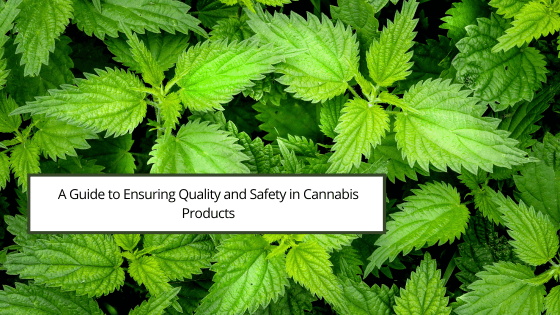Legalizing cannabis for medicinal and recreational purposes has opened up a thriving industry. With its increasing popularity, it becomes crucial to prioritize the quality and safety of cannabis products. Consumers must have access to reliable and safe cannabis products, free from harmful contaminants.
Understanding Regulatory Standards
Regulatory standards and requirements vary across different regions and countries. It is vital to familiarize yourself with the specific regulations governing the cannabis industry in your area. This includes understanding labeling requirements, testing protocols, and permissible levels of contaminants. Compliance with these standards is essential to ensure the quality and safety of cannabis products.
Quality Control and Testing
One of the most crucial steps in ensuring the safety of cannabis products is rigorous quality control and testing. Proper testing should be conducted at different stages of the production process, including cultivation, extraction, and manufacturing. This helps identify and eliminate potential contaminants such as pesticides, heavy metals, and microbial pathogens.
Testing should also verify the potency and composition of the product, ensuring that it matches the information provided on the label. Reputable cannabis producers work with accredited third-party laboratories to ensure accurate and unbiased testing results. Consumers should look for products that have been tested and display a certificate of analysis (COA) to guarantee their safety.
Cultivation Practices
Quality cannabis products begin with the cultivation process. Organic and sustainable cultivation practices minimize harmful pesticides and fertilizers, producing cleaner and safer products. Cultivators should follow Good Agricultural Practices (GAP) and employ integrated pest management systems to reduce the reliance on chemical pesticides.
Additionally, maintaining proper environmental conditions, such as temperature, humidity, and light, ensures optimal plant growth and reduces the risk of contamination. Cultivators should prioritize cleanliness, sanitation, and proper ventilation to prevent the development of molds and other harmful microorganisms.
Extraction Methods
The extraction method used to obtain cannabinoids and other beneficial compounds from the cannabis plant can significantly impact the quality and safety of the final product. Safe and efficient extraction methods, such as supercritical CO2 or ethanol extraction, are preferred over potentially harmful alternatives.
Producers should prioritize using high-quality solvents and equipment to minimize the risk of residual solvents in the final product. Proper filtration and purification techniques help remove impurities and ensure the product is free from contaminants.
Packaging and Labeling
Proper packaging and labeling are essential for consumer safety and education. Cannabis products should be packaged in child-resistant containers to prevent accidental ingestion. The packaging should also protect the product from light, moisture, and oxygen, which can degrade its quality.
Accurate and informative labeling is crucial for consumers to make informed decisions. Labels should include the product’s cannabinoid profile, potency, recommended dosage, and potential allergens. Additionally, clear instructions for use and proper storage should be provided to ensure consumer safety.
In Conclusion
As the cannabis industry continues to grow, ensuring the quality and safety of cannabis products becomes paramount. Adhering to regulatory standards, implementing rigorous quality control and testing procedures, and employing sustainable cultivation and extraction practices are crucial steps to guarantee the safety of cannabis products. By prioritizing these measures, we can promote a safer and more reliable cannabis market for all users.

